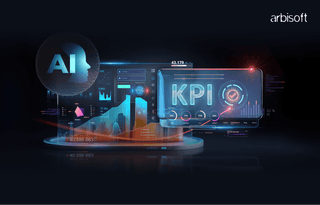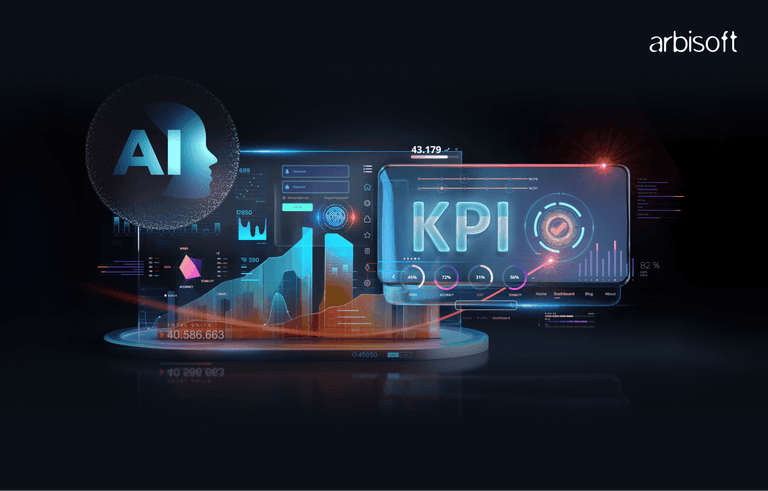We put excellence, value and quality above all - and it shows




A Technology Partnership That Goes Beyond Code

“Arbisoft has been my most trusted technology partner for now over 15 years. Arbisoft has very unique methods of recruiting and training, and the results demonstrate that. They have great teams, great positive attitudes and great communication.”
How to Build Your Own Makerspace: A Guide for Schools and Communities

Imagine a vibrant space filled with 3D printers whirring, students buzzing with excitement, and the scent of creativity in the air. Welcome to the world of makerspaces, dynamic environments that are revolutionizing STEM education. These collaborative areas foster hands-on learning and ignite the passion for innovation among students, preparing them for the challenges of tomorrow's workforce.
In this blog, let’s explore how makerspaces transform traditional learning into an engaging and practical experience for students of all ages as we explore the growth of makerspaces in education.
Browse the directory of top makerspaces in the USA and uncover where creativity happens.

Discover top makerspaces across the USA.

So First Things First, What Are Makerspaces?
Makerspaces are creative workshops where students can design, build, and experiment with various tools and technologies. They offer access to equipment like 3D printers, robotics kits, and electronic components, encouraging students to explore their interests and develop skills crucial for future STEM careers. Some schools also get mobile apps developed to track and enhance hands-on learning experiences beyond the physical makerspace.
These spaces are often set up in schools, libraries, or community centers and serve as collaborative hubs where students can work on projects individually or in groups. The emphasis is not just on the tools but also on the culture of creativity, innovation, and problem-solving.
Think of makerspaces as the modern-day version of science fairs or art projects, but with the resources and guidance to take ideas from concept to reality. Here, students learn by doing, making education relevant and fun.
The Impact of Makerspaces on STEAM Learning
Makerspaces offer numerous benefits that enhance STEM education. Here’s how they’re making a difference in classrooms:
1. Practical Learning and Problem Solving: In traditional classrooms, students learn theories, but makerspaces allow them to put those theories into practice. For instance, students learning about circuits can build a device, deepening their understanding through hands-on experience.
2. Boosting Engagement and Interest: Makerspaces turn passive learning into an active adventure. Students can pursue projects that align with their interests, leading to greater motivation and enthusiasm for STEM.
3. Encouraging Creativity and Innovation: In these spaces, failure is a stepping stone rather than a setback, allowing students to take risks and think creatively, essential skills for future innovators.
4. Connecting Theory to Real-World Application: Makerspaces link classroom learning with real-world applications. For example, students studying geometry can create 3D models, making learning tangible and relevant.
With all these benefits, it’s clear that makerspaces are transforming classrooms. Let’s cover a simple, actionable guide to help you get started and build a makerspace that ignites curiosity and supports hands-on learning every step of the way.
A Step-by-Step Guide for Schools and Communities
A makerspace is a collaborative learning environment filled with tools and resources where students can engage in hands-on activities, foster creativity, and develop problem-solving skills. Whether you’re starting in a school or a community space, building a makerspace doesn’t have to be overwhelming. This guide breaks down the process, with actionable steps, templates, budget tips, and project ideas to get you started.
Step 1: Define the Purpose of Your Makerspace
Ask yourself, what do you want students or participants to achieve? Will the space focus on:
- STEM activities like robotics or coding?
- Art and design projects such as 3D printing or woodworking?
- Community problem-solving projects like environmental solutions?
Pro Tip: Align the space with your educational goals. For example, a school might focus on supporting the curriculum, while a community center might offer activities for multiple age groups.
Step 2: Find the Right Space and Layout
You don’t need a huge area to start. A corner of a library, an unused classroom, or even a mobile cart can serve as a makerspace. Focus on:
- Accessibility: Ensure the space is inclusive and open to all users.
- Flexible Layout: Use movable furniture to adapt the space for different activities.
- Storage Solutions: Use bins, shelves, and tool racks to keep everything organized.
Step 3: Create a Budget Plan
Creating a makerspace can be affordable if you plan wisely. Start with the basics and expand over time. Here's a sample budget template:
| Category | Estimated Cost |
|---|---|
| Basic Tools (screwdrivers, scissors) | $100-$300 |
| Electronics Kits (Arduino, Raspberry Pi) | $300-$500 |
| Craft Supplies (glue, markers, paper) | $100-$200 |
| 3D Printer (optional) | $500-$1,000 |
| Storage Units | $200-$400 |
| Miscellaneous (safety gear, batteries) | $100-$150 |
Step 4: Choose the Essential Tools and Materials
Depending on your focus, your makerspace might include:
- Craft tools: Scissors, glue guns, markers, cardboard.
- Electronics kits: Arduino boards, Raspberry Pi, breadboards, LEDs.
- Digital tools: 3D printers, laser cutters, vinyl cutters.
- Software tools: Tinkercad, Scratch, or CAD programs.
You don’t need everything at once. Start with core items and build your inventory as you learn more about users' needs.
Step 5: Identify Funding Opportunities and Grants
You can offset costs by applying for grants and funding. Here are some options:
- STEM-specific grants: Many tech companies offer educational grants for makerspaces.
- Crowdfunding platforms: Use platforms like DonorsChoose or GoFundMe to raise money.
- Government programs: Look for local education grants or community development funds.
- Partnerships with local businesses: Many businesses are willing to sponsor spaces in return for community outreach.
Step 6: Plan Hands-On Activities and Projects
Make the space engaging by offering activities that spark curiosity. Here are some starter project ideas:
- Build a Simple Robot: Use an Arduino board to make a robot that moves.
- Create 3D Printed Keychains: Introduce students to 3D design with a fun, simple project.
- Design Solar-Powered Cars: Teach students about renewable energy by making small solar vehicles.
- Art Meets Tech: Use conductive paint to make circuits that light up art pieces.
Step 7: Train Facilitators and Staff
A makerspace thrives with the right mentors. Teachers and volunteers don’t need to be experts but should be comfortable with guiding students. Here’s how to train facilitators:
- Workshops: Host training sessions with local experts or other educators.
- Online courses: Platforms like Coursera or Udemy offer courses on makerspace tools.
- Peer collaboration: Encourage staff to work together and exchange skills.
Step 8: Develop Guidelines and Safety Protocols
Safety is crucial in any makerspace. Create easy-to-follow rules, such as:
- Always wear safety goggles when using power tools.
- Use fireproof mats for activities involving heat.
- Set up tool check-in/check-out procedures to track usage.
- Clearly label dangerous equipment and keep it out of children’s reach.
Step 9: Engage the Community
Involving the community can increase participation and make your makerspace more sustainable. Ideas for community engagement:
- Maker fairs: Host events to showcase student projects.
- Workshops for parents and families: Invite families to collaborate on projects.
- Open-house events: Show off the makerspace to community members and local organizations.
Step 10: Maintain and Scale the Makerspace
A well-maintained makerspace ensures longevity. Keep track of tools and materials with inventory checklists. Maintenance tips:
- Schedule weekly clean-ups to keep the space organized.
- Create a tool repair system to fix broken items or send them out for servicing.
- Regularly survey users to gather feedback and ideas for improvement.
When you’re ready to expand, consider partnering with Dallas Mobile App Development Company to create custom apps that support student projects and makerspace management.
Building a makerspace may seem like a daunting task, but by taking small steps, you can create an engaging environment that fosters curiosity, creativity, and problem-solving skills. Whether in a school or a community, a makerspace offers endless opportunities for hands-on learning, empowering participants to become the innovators of tomorrow.
Makerspace - Promoting Diversity and Inclusion in STEAM
Makerspaces also play a crucial role in promoting diversity within STEM/STEAM fields. They create inclusive environments that encourage participation from all students, regardless of their background, and integrate education technology & elearning solutions to further enhance learning experiences.
Gender Inclusion: Initiatives like Girls Who Code are designed to engage young girls in technology, addressing the gender gap in STEM careers. By offering supportive spaces, makerspaces help girls gain confidence in their abilities and explore technical fields. For further ideas on cultivating inclusion, explore gamification bridging gender gap in STEM.
Community Impact: Local makerspaces in underserved communities provide access to tools and resources, empowering students and strengthening community ties. Families and local organizations often rally together to support these innovative initiatives.
5 Real-World Challenges Makerspaces Solve for Schools and Communities
Today, schools and communities face unique challenges in preparing young people for a future full of technological possibilities. But there’s good news! Makerspaces, collaborative spaces filled with tools for hands-on learning, are here to tackle these issues head-on. Let’s look at the major challenges and how makerspaces are stepping up with real solutions.
- Makerspaces bring STEM to life through engaging projects, making learning meaningful.
- Makerspaces pool resources to provide high-tech gear for students of all backgrounds.
- These spaces teach teamwork, creativity, and problem-solving, skills that employers value.
- Makerspaces act as community hubs, connecting people through shared projects.
- Makerspaces are designed to be accessible, encouraging diversity and empowering future innovators.
Empowering the Innovators of Tomorrow
Makerspaces are more than just trendy educational spaces; they represent a significant shift in how we approach learning in the 21st century. By providing students with hands-on experiences that foster creativity, problem-solving, and collaboration, makerspaces are preparing them for the dynamic challenges they will face in the future.
Whether you are a student, parent, educator, or community member, the growth of makerspaces presents a unique opportunity to engage with STEM in exciting and meaningful ways. By supporting makerspaces, we cultivate a new generation of innovators ready to tackle complex problems with creativity and confidence.
In investing in these creative environments, we’re not just preparing students for their next project; we’re equipping them with the skills they need to succeed in an increasingly complex and interconnected world. Together, let’s empower our future thinkers, creators, and leaders to make their mark on tomorrow.
























